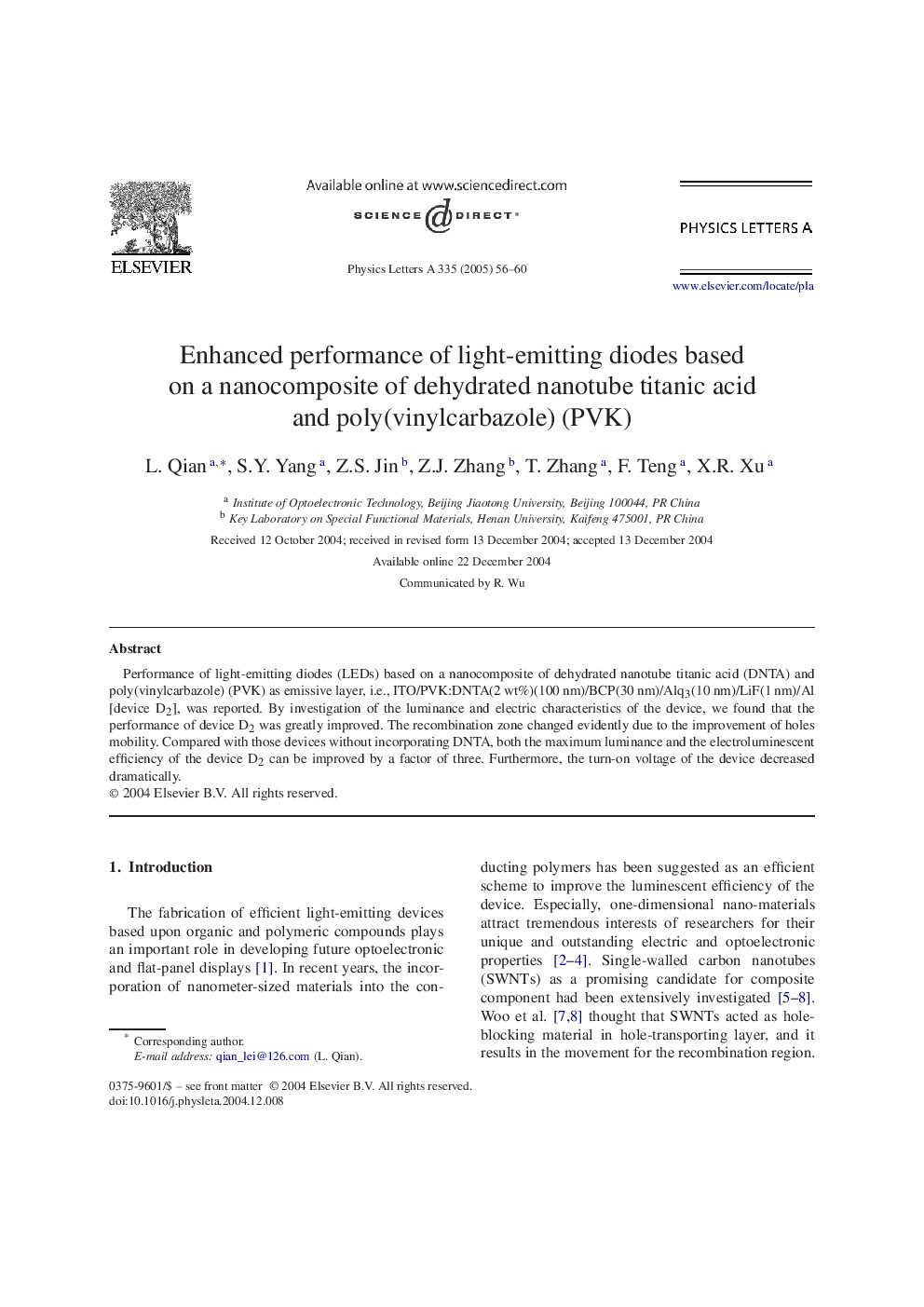| Article ID | Journal | Published Year | Pages | File Type |
|---|---|---|---|---|
| 10727590 | Physics Letters A | 2005 | 5 Pages |
Abstract
Performance of light-emitting diodes (LEDs) based on a nanocomposite of dehydrated nanotube titanic acid (DNTA) and poly(vinylcarbazole) (PVK) as emissive layer, i.e., ITO/PVK:DNTA(2 wt%)(100 nm)/BCP(30 nm)/Alq3(10 nm)/LiF(1 nm)/Al [device D2], was reported. By investigation of the luminance and electric characteristics of the device, we found that the performance of device D2 was greatly improved. The recombination zone changed evidently due to the improvement of holes mobility. Compared with those devices without incorporating DNTA, both the maximum luminance and the electroluminescent efficiency of the device D2 can be improved by a factor of three. Furthermore, the turn-on voltage of the device decreased dramatically.
Related Topics
Physical Sciences and Engineering
Physics and Astronomy
Physics and Astronomy (General)
Authors
L. Qian, S.Y. Yang, Z.S. Jin, Z.J. Zhang, T. Zhang, F. Teng, X.R. Xu,
